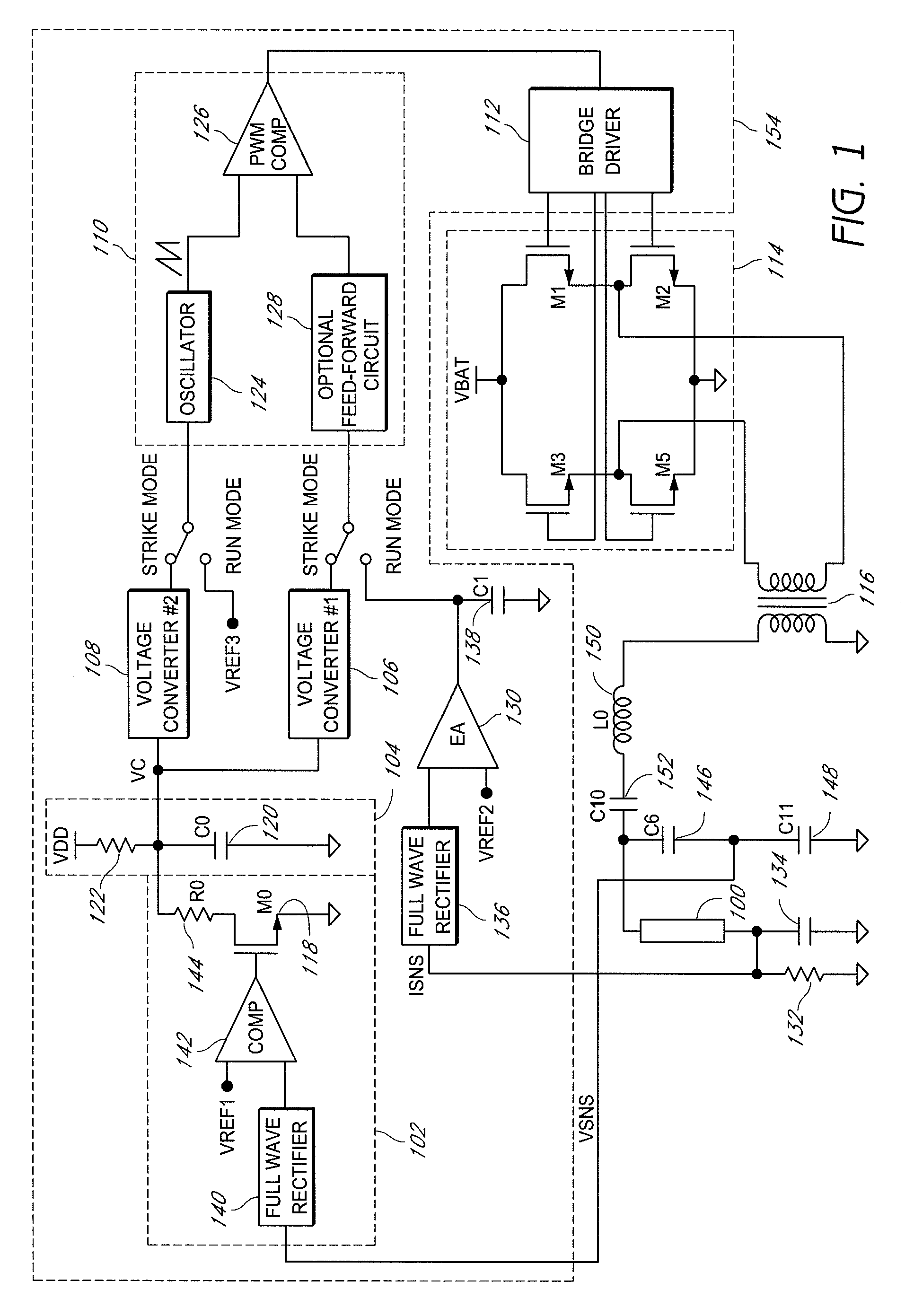Striking and open lamp regulation for CCFL controller
a technology of open lamp and inverter controller, which is applied in the direction of electric variable regulation, process and machine control, instruments, etc., can solve the problems of limited power required to generate light, and achieve the effects of maximizing secondary voltage, improving loop stability, and facilitating control and compensation
- Summary
- Abstract
- Description
- Claims
- Application Information
AI Technical Summary
Benefits of technology
Problems solved by technology
Method used
Image
Examples
Embodiment Construction
[0025]Further descriptions of several embodiments of the invention will be described hereinafter with reference to the drawings. FIG. 1 illustrates a circuit block diagram of one embodiment of an inverter for powering a lamp (e.g., a CCFL) 100. The inverter comprises a closed feedback loop that seamlessly controls ignition of the lamp 100 and provides open lamp voltage regulation during a strike mode of the inverter. In one embodiment, the closed feedback loop comprises a voltage detector circuit 102, a control voltage generator 104, a first voltage converter 106, and a second voltage converter 108.
[0026]For example, the voltage detector circuit 102 receives a first feedback signal (VSNS) indicative of an output voltage (or a voltage across the lamp 100) and generates an output indicating when the output voltage is greater than a predetermined voltage level corresponding to a first reference voltage (VREF1). The control voltage generator 104 generates a control voltage (VC) that can...
PUM
 Login to View More
Login to View More Abstract
Description
Claims
Application Information
 Login to View More
Login to View More - R&D
- Intellectual Property
- Life Sciences
- Materials
- Tech Scout
- Unparalleled Data Quality
- Higher Quality Content
- 60% Fewer Hallucinations
Browse by: Latest US Patents, China's latest patents, Technical Efficacy Thesaurus, Application Domain, Technology Topic, Popular Technical Reports.
© 2025 PatSnap. All rights reserved.Legal|Privacy policy|Modern Slavery Act Transparency Statement|Sitemap|About US| Contact US: help@patsnap.com



